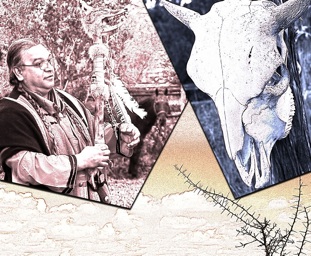
Coahuiltecan natives were assimilated into the Spanish missions, and archeologists of the recent past considered them to be extinct. However, descendants of those same natives say their people never died out: They were absorbed into the Spanish and Mexican cultures that surrounded them.
The Tap Pilam Coalhuiltecan Nation constitutes the modern day descendants of protohistoric Indians living in south Texas, who collectively came to be known as Coahuiltecans. Today, these Coahuiltecan descendants are an essential component to the Land Heritage Institute.
“We always knew we were different. We knew we were Indian,” says Ray Hernandez, a Tap Pilam tribal elder.
In 1994 the Native American community came together to form the American Indians in Texas at the Spanish Colonial Missions (AIT-SCM), whose mission it is to preserve and protect their culture and traditions. AIT-SCM also provides developmental programs, founded on sacred Coahuiltecan teachings, for the education of their members. One such program, the AIT-SCM Rites of Passage, seeks to connect youths with their indigenous teachings. “We know of our culture,” said Isaac Cardenas, a Coahuiltecan descendant and program manager for AIT-SCM, “but we saw a lot of youth that didn’t know.”
One of the first goals of the American Indians in Texas at the Spanish Colonial Missions was to reclaim the ancestral remains of those who once lived in and around the Medina river area. These remains were excavated from Mission San Juan Capistrano in 1967. In November 1999, the remains of over 100 Coahuiltecan men, women and children were re-buried on the grounds of the mission; stone markers commemorate the remains.
Future plans of the Tap Pilam/Coahuiltecan nation on the LHI site include the construction of the American Indians in Texas Cultural Center. Over the past ten years the tribe has used the LHI property for tribal activities and events. The proposed new cultural center will house artifacts uncovered during archeological projects. The Center also serve as a permanent location for tribal functions and educational programs. The public will be invited to interact during these events to help educate other communities about Native Americans in Texas, both past and present.

